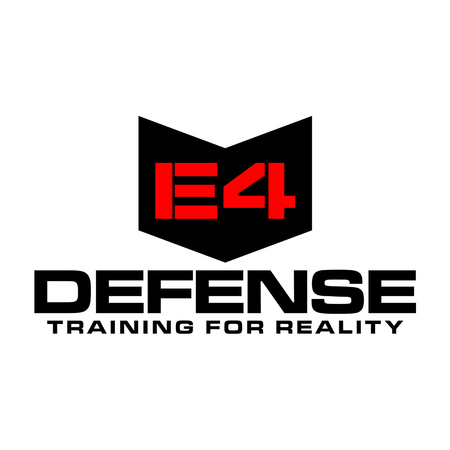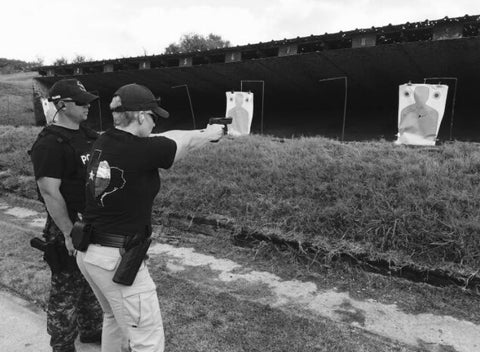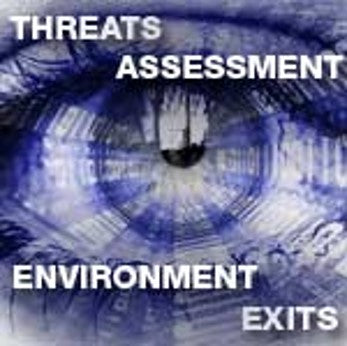Articles
Closing the Reactionary Gap
Having a trained mindset for duty is paramount in Law Enforcement. In The Acts of King Arthur and His Noble Knights, John Steinbeck brilliantly wrote: “This is the law. The purpose of fighting is to win. There is no possible victory in defense. The sword is more important than the shield, and skill is more important than either. The final weapon is the brain, all else is supplemental.” Steinbeck was spot on, if your brain does not process the indicators your suspect is giving, you will lose the opportunity to act and be constrained with reaction.
As Law Enforcement Instructors, we have a very unique challenge. Our job is to train officers and send them out on the streets hoping the tactics will be retained and functionally available to them under the confines of the body’s fight or flight stress response. Ah yes, stress: the ultimate game changer! We have seen it expose its antagonistic self while reviewing dash or body cam footage. We have been running scenarios during training and the new, or even seasoned officer, simply freezes, cannot manipulate their weapon, misses the white elephant in the room, forgets standard SOP, or fails to give simple commands. Afterwards, we ask, “What just happened?” Many times we hear, “I don’t know, I just froze. I saw that but didn’t think anything about it or I usually . . . “, which is followed by a few colorful four letter words.
After years of training in shoot houses with multiple departments, with students ranging from the basic academy recruits to seasoned officers, I’ve heard every explanation and reason they have for, “why I did not”. Certainly, the one I disliked the most and heard all too frequently is, “I didn’t even see that coming.” Ultimately, I wanted to ask, “How did you not see that coming”? However, I already knew the answer. They did not know what they were supposed to recognize. The officers had not been trained to recognize and process the body language and pre-attack indicators of the suspect.
Closing the Reactionary Gap
How an officer reacts to routine calls on duty when stress is low is often very predictable. Sometimes, they may take the “nothing bad is ever going to happen to me” approach and go on auto pilot. Comparatively, when the prospective outcome to the call is unknown but not life threatening, the officer is often more alert with heightened senses and will rely on their training to take over like a well-oiled machine. What puts officers at utmost risk is when they do not identify intentions of imminent threat and all hell breaks loose, fight or flight kicks in and they are forced to engage with limited abilities.
Although we cannot train away our body’s natural automatic response to stress, we can employ tactics to recover faster. Or, more favorably, read body language, recognize the pre-attack indicators, and take control of the situation before it turns ugly. According to FBI statistics, 57,189 assaults occurred on officers in 2016. People speak volumes with their body language. In many cases, what their body is saying will be a lot more accurate than what is coming out their mouth. Trained officers are able to recognize the signs of an imminent attack and position themselves for an advantageous outcome.
Closing the Reactionary Gap is an in-depth course providing a real life understanding of the human body’s internal and external response to fight or flight mode, an officer’s specific response, how to recover, the importance of training using naturally occurring tactics, officer situational awareness, trusting intuition, reading body language, why reading body language is effective, and recognizing pre-attack indicators. There will also be a thorough discussion on how Closing the Reactionary Gap training can be incorporated into daily patrol activities as well as future training sessions in order to maintain retention and application.
About the author
Heather was a Criminal Justice Major in college and has been actively involved in law enforcement since 2010. She holds multiple firearm, RBT/Force-on-Force, and Specialty Training Certifications. She is an active member of ILEETA, IALEFI® and IAWP. Currently, she serves as a Texas DPS PSB Level III Firearms and Academic Instructor in Dallas-Fort Worth and owns her own company, E4Defense, LLC. Through her years of instructing and working with multiple departments across the country, she recognized the dire need for advanced firearms, defensive tactics, and mental preparedness training for officers and formed E4Defense, LLC. In addition to firearms, defensive tactics, and mental preparedness training, E4Defense provides departments and private security companies with training program consultations.


